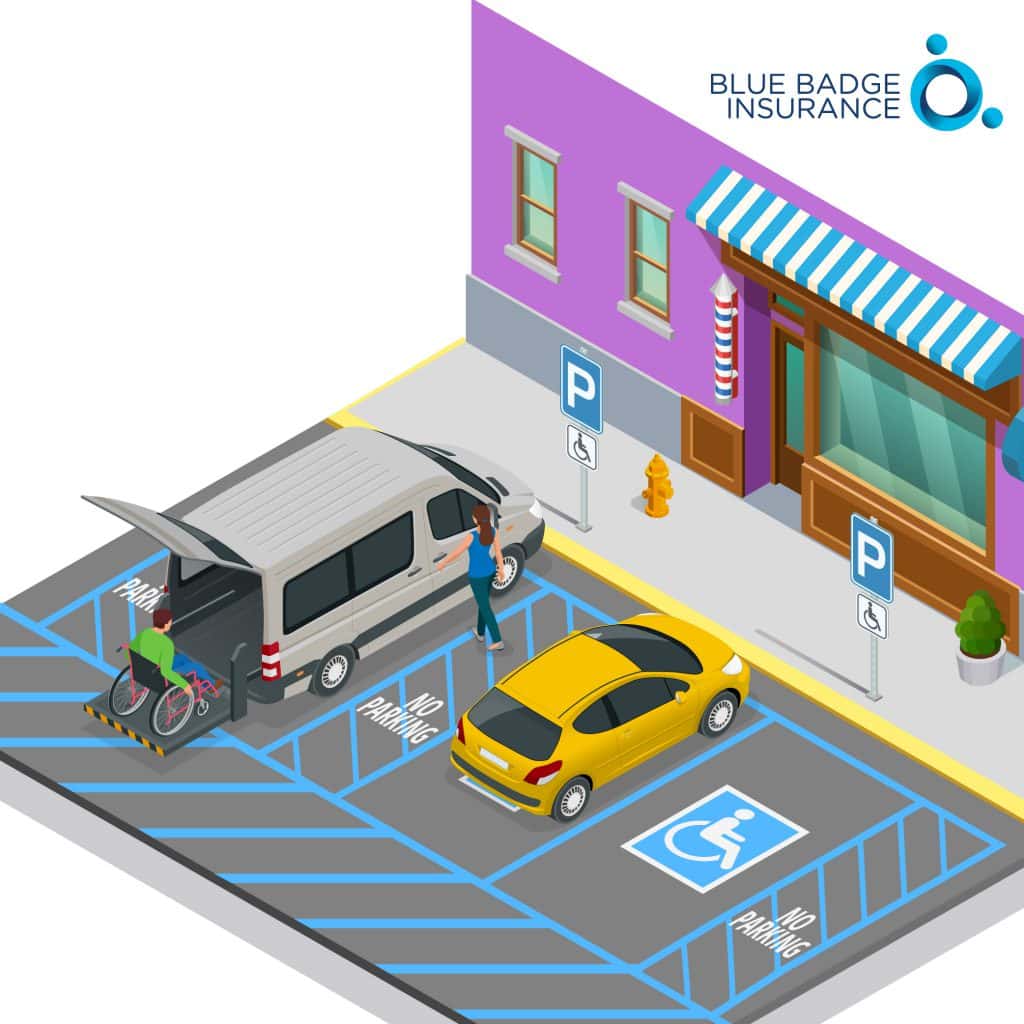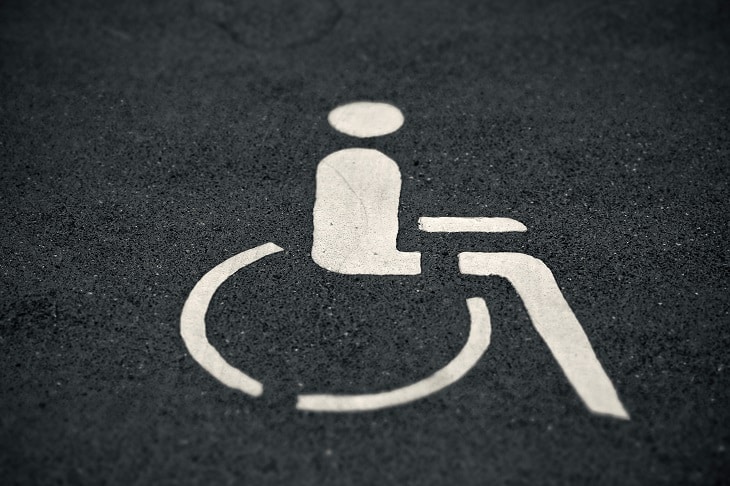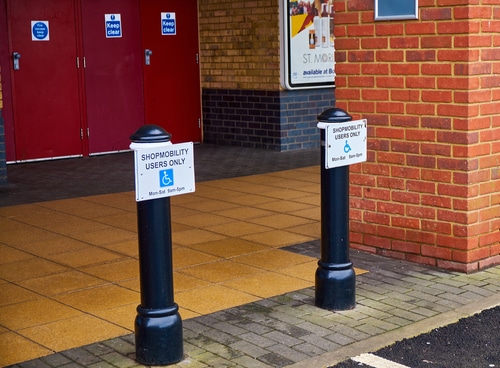When it comes to accessible parking around the world, some countries do it better than others. Do you think Australia is one of them?
As you’re well aware, accessible parking is not a luxury or nice to have, but a necessity for those living with disability. Entering and exiting a building can be impossible without it. Despite that, in this country and worldwide there are still too few accessible parking spaces. Many times they’re also too small or don’t have loading bays to accommodate all types of wheelchair accessible vehicles (WAVs).
We still have a pervasive problem of people without disabilities illegally parking in these spots. Statistics in New South Wales alone reveal that over 15,000 fines are issued each year for parking in disabled spots. In our own research almost everyone with a disability parking permit we’ve surveyed says they’ve seen people without the permits parking in these highly-needed spaces.
In fact, an eye-widening 77% of respondents say they’ve “had to give up on an outing because there wasn’t an accessible parking space”. This is unacceptable. Australia still has some way to go in creating truly accessible parking for all.
Looking further afield, when it comes to accessible parking around the world, which countries are doing it better and which could we use as examples to follow?
Problems with accessible parking
Firstly, what are the problems? Our ‘Let’s talk parking on the International Day of People with Disability‘ article explores this to a certain extent.
One big issue is that even when there are enough accessible parking bays (rare!), many don’t cater for all types of WAVs.
Some bays will only make provision for rear entry WAVs, and even when they do the bay is still not long enough and wheelchair users are forced to exit moving towards traffic.
In other instances, bays are raised so those using side entry WAVs can’t exit.
Other bays don’t have left or right hand loading zones, or when they do these zones are too narrow. Very often, these zones may be blocked by other cars, dustbins, trolleys, or other objects.
Often, bays will accommodate WAVs correctly but the kerb ramp is located elsewhere. This means wheeling around the parking lot to find access to the paved area, which is obviously dangerous. A car could easily miss a wheelchair user because they’re lower than what the driver is used to looking out for.
Now we’ve got that off our chest let’s look at what other countries are doing in this space…

Accessible parking around the world
Below we list four countries and how their parking spaces cater (or don’t) to people living with mobility issues. We’d love to know if you’ve had experiences elsewhere – please share them via our Blue Badge Insurance Facebook page!
New Zealand
As mentioned above, one of the problems with accessible parking is that kerb ramps are being placed away from the parking bay.
New Zealand has a regulation that requires accessible parking spaces to be designed so people with disabilities don’t have to pass behind parked cars when moving to an accessible route or when approaching the entrance.
Seems like a no-brainer, doesn’t it.
PS: Ever pondered the accessibility symbol and thought that it shows a limited representation of mobility? We delve into the topic.
United States
The laws in Australia dictate that there must be 1 disabled parking bay per 50 parking bays up to 1,000 and an additional 1 per 100 parking bays after that for commercial buildings.
When it comes to accessible parking around the world, the US does it better. There, you need 2 disabled parking bays for every 26-50 parking bays as well as 1 van accessible parking space:
| Total Number of Parking Spaces in Parking Facility (Lot or Garage) | Minimum Total Number of Accessible Parking Spaces Required | Minimum Number of Van Accessible Parking Spaces |
| 1 – 25 | 1 | 1 |
| 26 – 50 | 2 | 1 |
| 51 – 75 | 3 | 1 |
| 76 – 100 | 4 | 1 |
| 101 – 150 | 5 | 1 |
| 151 – 200 | 6 | 1 |
| 201 – 300 | 7 | 2 |
| 301 – 400 | 8 | 2 |
| 401 – 500 | 9 | 2 |
| 501 – 1,000 | 2% of total | |
| 1,001 and over | 20, plus 1 for each 100, or fraction thereof, over 1,000 |

Looking beyond accessible parking spaces, Washington apparently tops of the list of wheelchair-friendly states. Seattle (a seaport city in Washington) has a fully accessible public transport system and many accessible tourist attractions. Seattle has been ranked the most wheelchair-friendly city in America in several polls. Washington State more broadly also has lots of accessible nature trails and areas of natural beauty to explore and enjoy.
Some cities, however, are not accessible at all. Wheelchair users in Florida, for instance, suffer from poor infrastructure and the failure of local governments to prioritise accessibility.
You might also find it interesting to read the worst cities in America for people living with disabilities and how the implementation of access to public spaces has not always lived up to the law. We suggest taking a deep breath before clicking.
UK
When it comes to accessible parking around the world, Australia has comparatively hefty fines for those who abuse accessible parking spaces. Brisbane recently decided to drastically increase their fines for this infringement, from to $266 to $533 so people are deterred from breaking the law.
That’s still not as high as London, though. Accessible parking abuse there can get you fined up to £1,000 (around AUD$1,860), for instance. That has to be a strong deterrent for leaving accessible parking spaces to those who deserve it – disability parking permit holders.

Africa
Developing countries in Africa still have a long way to go in making progress towards accessibility and disabled parking. To say the least.
Cairo, for instance, is known as one of the top five worst places to visit as a person living with a disability. There’s no infrastructure whatsoever to facilitate wheelchair access anywhere.
However, it’s not all doom and gloom. South Africa for instance has made some inroads in providing accessible parking, and you can use your local disabled parking permit for up to a month as a tourist. If you’re planning on staying for more than a month, then you’ll need to apply for a temporary disabled parking permit.
You can find the South African laws on disabled parking dimensions and more here.
In conclusion, accessible parking around the world varies drastically from place to place. But wherever you decide to go, let us at least take one worry off your list for when you’re at home: car insurance and mobility equipment insurance.
With Blue Badge Insurance, our disability car insurance for disability parking permit holders offers customers a premium discount of up to 25%. And our mobility scooter insurance and wheelchair insurance is second to none in several ways. Why not give us a call?








